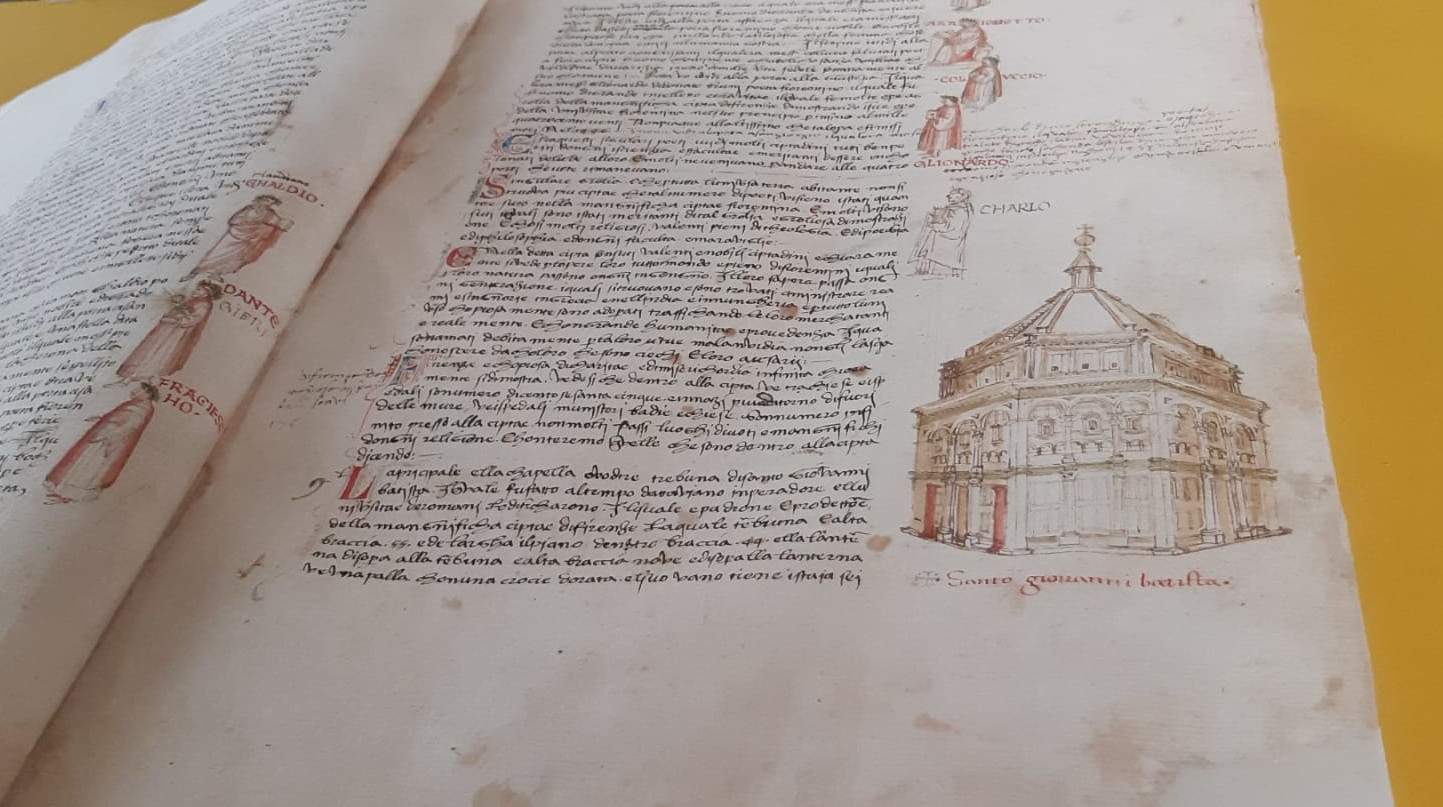Florence, Rustici Codex goes to Palazzo Vecchio: shows what early Renaissance Florence was like
The Codex Rustici, a work by Marco di Bartolomeo Rustici (Florence, 1392 - 1457), is the focus of the exhibition Codex Rustici: A Renaissance Look at Today’s Florence set up in the Cortile di Michelozzo of Palazzo Vecchio in Florence from April 5 to 28, 2024. Curated by Cristina Acidini and Elena Gurrieri and promoted by the City of Florence in collaboration with MUS.E, the exhibition displays the main images of the codex accompanied by explanatory texts, offering a view of the history and architectural evolution of Florence to the present day.
The manuscript housed in the Library of the Major Archiepiscopal Seminary of Florence and titled Demonstration of the going or journey to the Holy Sepulchre and Mount Sinai, is a journey to the ideal destination of Jerusalem and the Holy Land but also a remembrance of its city, Florence, thus placing itself among the primary points of reference for reconstructing its face in the early Renaissance. The prized Rustici Codex has been on several occasions consulted and studied as an accurate source, capable of restoring forms and details of the city’s most relevant monuments, with special attention to architectures dedicated to faith, hospitality and charity, and thoroughly analyzed by scholars Cristina Acidini and Elena Gurrieri. The work of Marco di Bartolomeo Rustici takes us ideally back to the time when Florence imagined and built its own economic and cultural rise, designing the face of the city that can still be admired today: very famous are his illustrations of the Baptistery, Santa Maria del Fiore or the Spedale degli Innocenti, to name but a few, finely executed in pencil and ink, bistro and precious colored pigments. The public will be able to retrace the Florentine streets of the mid-15th century by delving into the characters of a “beautiful and devout” city, where the architecture and the arts all express the sense of a community of solidarity, clustered around the places of spirituality, welcome and mutual aid. A sacred geography that Marco di Bartolomeo felt and lived, looking at his city as an ideal place of spirituality: as he himself writes at the end of his writing, “having returned to my homeland and having seen and understood many provinces and cities which are for the universe of the world, it seemed to me to have returned to paradise.”
“An opportunity for everyone, Florentines and visitors alike, to immerse themselves in early Renaissance Florence,” said Deputy Mayor and Councillor for Culture Alessia Bettini. "graspingthe deep connection that exists between the city of yesterday and that of today. A precious testimony that gives back a detailed image of the city, with its monuments, its churches, but also its places of charity and its daily life. A Florence in which architecture and the arts express the sense of a community of solidarity and a spiritual dimension of the city, which this exhibition invites us to rediscover."
“With this project,” say the curators, “we wish to give prominence and visibility to a more conscious look at Florence’s urban reality in the eyes of Florence’s citizens and visitors in our present. It is an exhibition that aims to promote knowledge of Renaissance Florence compared with the contemporary city that we live in and see in our daily lives.”
The exhibition can be visited free of charge during the days and opening hours of the Museo di Palazzo Vecchio (daily from 9 a.m. to 7 p.m., except Thursdays from 9 a.m. to 2 p.m.).
 |
| Florence, Rustici Codex goes to Palazzo Vecchio: shows what early Renaissance Florence was like |
Warning: the translation into English of the original Italian article was created using automatic tools. We undertake to review all articles, but we do not guarantee the total absence of inaccuracies in the translation due to the program. You can find the original by clicking on the ITA button. If you find any mistake,please contact us.



























